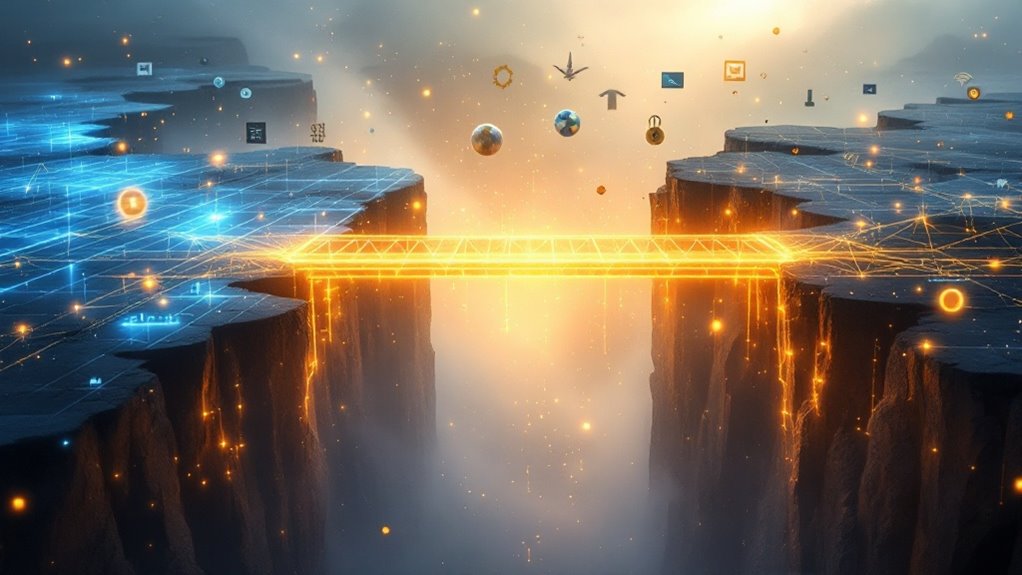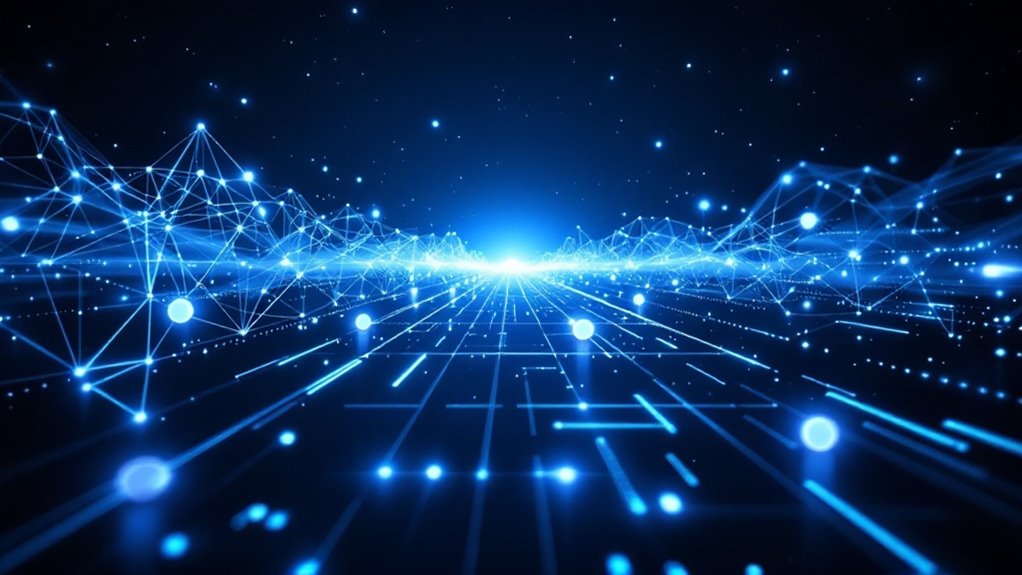Blockchain oracles serve as digital bridges between smart contracts and real-world data, solving blockchain's inherent isolation from external information. These technological intermediaries gather, verify, and transmit essential data like market prices, weather conditions, and supply chain updates to blockchain networks. Think of them as trusted messengers, ensuring that smart contracts can make informed decisions based on real-world events. While they face challenges like centralization risks, innovative solutions continue to strengthen these important connections between our physical and digital domains.

While blockchain technology has revolutionized digital transactions, it faces a fundamental challenge: its inability to directly access real-world data. Enter blockchain oracles, the digital bridge-builders that connect smart contracts to the vast ocean of information flowing outside the blockchain. Like trustworthy messengers in a digital domain, these oracles gather, verify, and deliver real-world data to hungry smart contracts waiting to execute their programmed duties. Network nodes must generate identical outputs when processing oracle data to maintain consensus. These oracles play a vital role in expanding smart contract functionality across various industries.
Think of oracles as the blockchain's sensory system, its eyes and ears to the external world. They come in various forms, each serving unique purposes in the expanding blockchain ecosystem. Inbound oracles fetch external data like market prices and weather conditions, while outbound oracles broadcast blockchain events to the outside world. Hardware oracles act as digital witnesses, monitoring physical events through sensors and IoT devices, while software oracles navigate the internet's endless streams of digital information. The cryptographic techniques employed ensure that the data delivered remains tamper-resistant and secure.
Blockchain oracles serve as digital gatekeepers, bridging the gap between smart contracts and real-world data through multiple specialized channels.
In practice, these oracle systems have found their way into numerous real-world applications. DeFi platforms rely on them for up-to-the-second price feeds, insurance companies automate claims processing through verified weather data, and supply chain managers track products as they journey across the globe. It's like having a fleet of digital fact-checkers working around the clock, ensuring that blockchain applications stay synchronized with reality.
However, the oracle landscape isn't without its thorns. The infamous "oracle problem" looms large – the risk of creating a single point of failure in an otherwise decentralized system. Projects like Chainlink and Band Protocol have risen to this challenge, developing decentralized oracle networks that spread risk across multiple data sources and validators.
Looking ahead, the oracle space continues to evolve with promising innovations on the horizon. Cross-chain solutions are emerging, allowing oracles to serve multiple blockchain networks simultaneously. As blockchain technology matures, these digital bridges grow stronger and more sophisticated, enabling new possibilities for connecting our physical and digital worlds.
The future of blockchain oracles shimmers with potential, promising to reveal even more powerful applications of this transformative technology.
Frequently Asked Questions
How Much Does It Cost to Implement a Blockchain Oracle Service?
Implementing a blockchain oracle service typically costs between $85,000 to $850,000+ initially, with ongoing monthly expenses ranging from $5,600 to $65,000+, depending on complexity, scale, and security requirements.
Can Blockchain Oracles Be Hacked or Manipulated by Malicious Actors?
Yes, oracles can be hacked or manipulated through various attack vectors including price manipulation, flash loan attacks, and centralized data source compromise. In 2022, attackers stole $403.2 million through oracle exploits.
What Programming Languages Are Commonly Used for Developing Blockchain Oracles?
Popular languages for developing blockchain oracles include Solidity, Python, JavaScript, and Go. These languages enable developers to create secure data feeds connecting smart contracts with external real-world information sources.
How Do Blockchain Oracles Handle Network Downtime and Service Interruptions?
Network downtime and service interruptions are managed through redundant nodes, failover mechanisms, and backup data sources. Automatic node rotation and decentralized networks guarantee continuous operation while consensus mechanisms validate data accuracy.
Which Companies Currently Provide the Most Reliable Blockchain Oracle Services?
Chainlink leads oracle reliability with extensive network adoption and institutional partnerships. Band Protocol and API3 follow with robust multi-chain solutions, while Tellor maintains reliability through its proof-of-work consensus mechanism.









